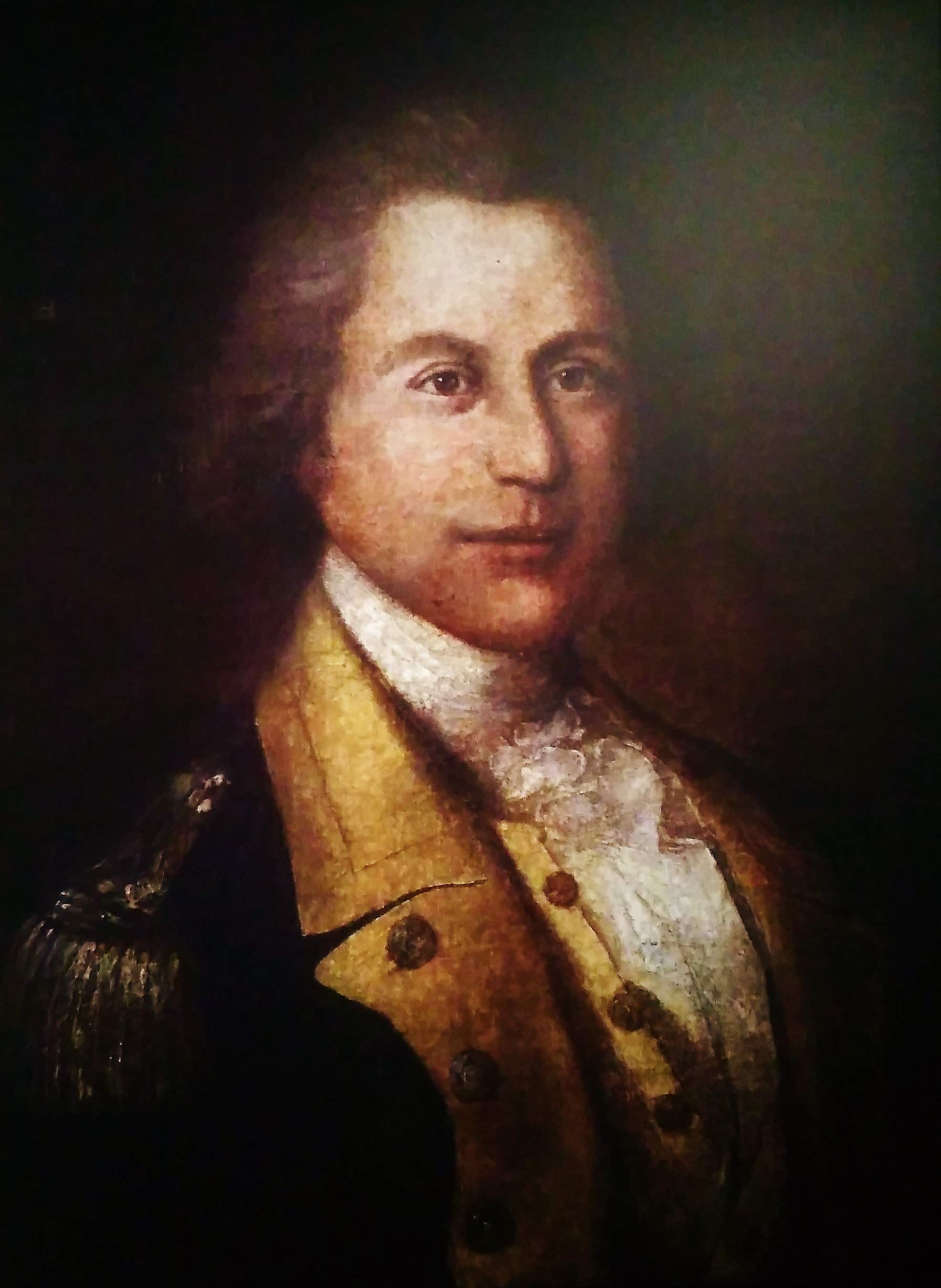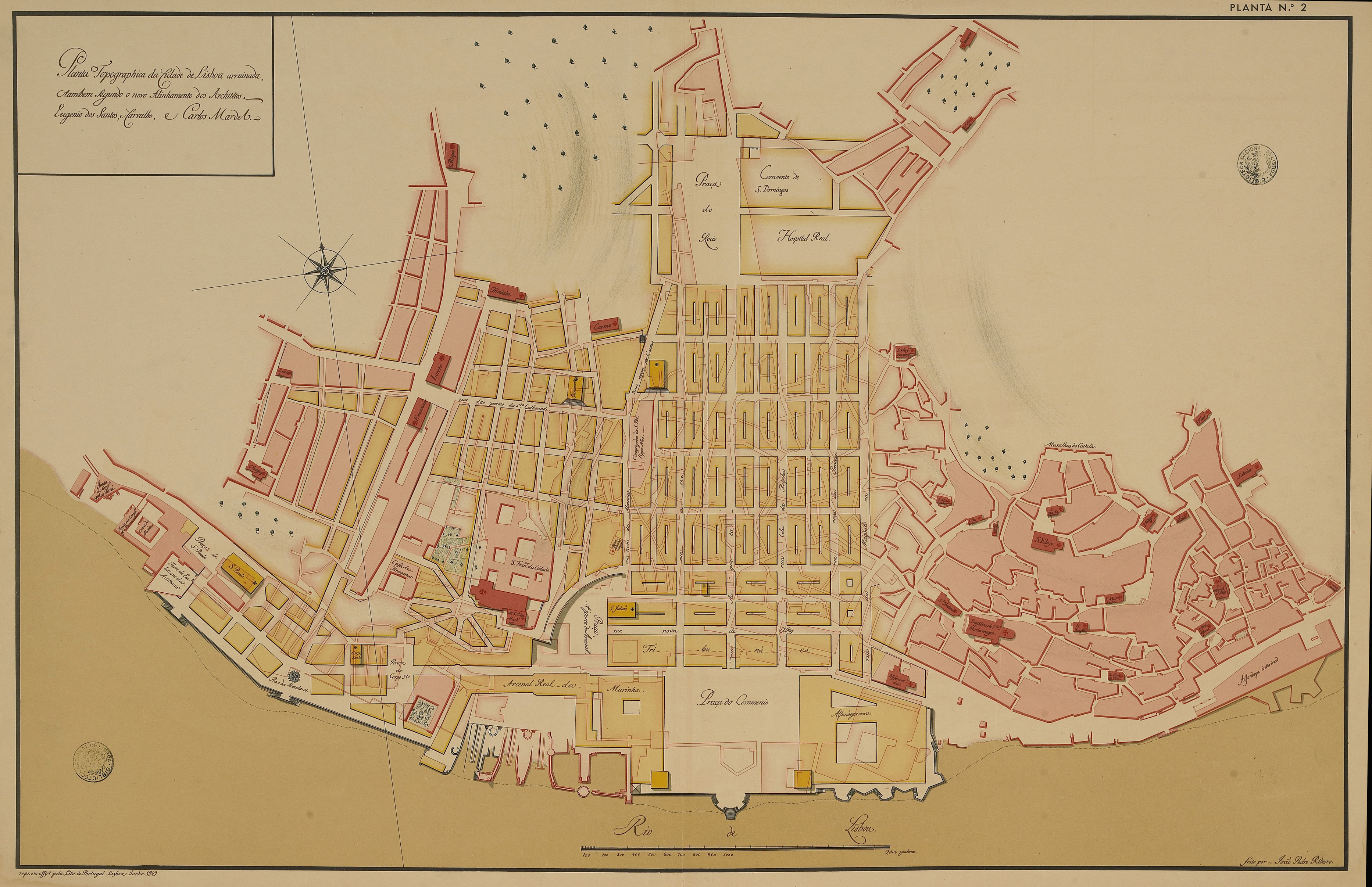|
Eugénio Dos Santos
Eugénio dos Santos de Carvalho (1711–1760) was a Portuguese architect and military engineer, responsible for the planning and rebuilding of Lisbon's Pombaline Lower Town after the 1755 earthquake. Among other buildings he designed the Lisbon City Hall, which was destroyed by fire in 1863. He designed the Palacio do Grilo Palácio do Grilo (English: Grilo Palace) classified as Public Interest Monument since 2011, also known as the Palace of the Dukes of Lafões (Portuguese: Palácio dos Duques de Lafões), is located at the corner of Grilo Street with the Duk ..., palace of the Lafões family in Lisbon. His austere design for apartment buildings with retail at ground floor level are considered a precursor of functionalist urbanism.Fohr, RobertSantos de Carvalho Eugénio dos - (1711-1760) Encyclopædia Universalis nline retrieved 18 July 2015 References {{DEFAULTSORT:Santos, Eugenio dos Portuguese architects Military engineers 1711 births 1760 deaths ... [...More Info...] [...Related Items...] OR: [Wikipedia] [Google] [Baidu] |
Eugénio Dos Santos
Eugénio dos Santos de Carvalho (1711–1760) was a Portuguese architect and military engineer, responsible for the planning and rebuilding of Lisbon's Pombaline Lower Town after the 1755 earthquake. Among other buildings he designed the Lisbon City Hall, which was destroyed by fire in 1863. He designed the Palacio do Grilo Palácio do Grilo (English: Grilo Palace) classified as Public Interest Monument since 2011, also known as the Palace of the Dukes of Lafões (Portuguese: Palácio dos Duques de Lafões), is located at the corner of Grilo Street with the Duk ..., palace of the Lafões family in Lisbon. His austere design for apartment buildings with retail at ground floor level are considered a precursor of functionalist urbanism.Fohr, RobertSantos de Carvalho Eugénio dos - (1711-1760) Encyclopædia Universalis nline retrieved 18 July 2015 References {{DEFAULTSORT:Santos, Eugenio dos Portuguese architects Military engineers 1711 births 1760 deaths ... [...More Info...] [...Related Items...] OR: [Wikipedia] [Google] [Baidu] |
Lisbon Baixa
The Baixa ''(Downtown)'' (), also known as the Baixa Pombalina (''Pombaline Downtown'') is a neighborhood in the historic center of Lisbon, Portugal. It consists of the grid of streets north of the Praça do Comércio, roughly between the Cais do Sodré and the Alfama district beneath the Lisbon Castle, and extends northwards towards the Rossio and Figueira squares and the Avenida da Liberdade (Lisbon), a tree-lined boulevard noted for its tailoring shops and cafes. History The Pombaline Baixa is an elegant district, primarily constructed after the 1755 Lisbon earthquake. It takes its name from Sebastião José de Carvalho e Melo, 1st Marquis of Pombal, the prime minister to Joseph I of Portugal from 1750 to 1777 and key figure of the Enlightenment in Portugal, who took the lead in ordering the rebuilding of Lisbon after the 1755 earthquake. The Marquis of Pombal imposed strict conditions on rebuilding the city, and the current grid pattern strongly differs from the organic str ... [...More Info...] [...Related Items...] OR: [Wikipedia] [Google] [Baidu] |
1755 Lisbon Earthquake
The 1755 Lisbon earthquake, also known as the Great Lisbon earthquake, impacted Portugal, the Iberian Peninsula, and Northwest Africa on the morning of Saturday, 1 November, Feast of All Saints, at around 09:40 local time. In combination with subsequent fires and a tsunami, the earthquake almost completely destroyed Lisbon and adjoining areas. Seismologists estimate the Lisbon earthquake had a magnitude of 7.7 or greater on the moment magnitude scale, with its epicenter in the Atlantic Ocean about west-southwest of Cape St. Vincent and about southwest of Lisbon. Chronologically, it was the third known large scale earthquake to hit the city (following those of 1321 and 1531). Estimates place the death toll in Lisbon at between 12,000 and 50,000 people, making it one of the deadliest earthquakes in history. The earthquake accentuated political tensions in Portugal and profoundly disrupted the Portuguese Empire. The event was widely discussed and dwelt upon by European ... [...More Info...] [...Related Items...] OR: [Wikipedia] [Google] [Baidu] |
Lisbon City Hall
The Lisbon City Hall ( pt, Paços do Concelho de Lisboa, ) is the seat of the Lisbon municipal government. The building is located in the City Square (''Praça do Município''), Santa Maria Maior, Lisbon. It houses the Lisbon City Council. Built in the neoclassical style, its monumental façade features a large pediment over a central balcony with sculptures by Calmels, and four oculi. Inside, it has a remarkable central staircase, by the architect José Luís Monteiro, and paintings by several artists, like Pereira Cão, Columbano Bordalo Pinheiro, José Malhoa e José Rodrigues. The original city hall was built following plans by Eugénio dos Santos, during the reconstruction of the Baixa neighbourhood that followed the 1755 earthquake. On 19 November 1863, a fire completely razed the building. A new City Hall was built in the same location, with plans drawn by architect Domingos Parente da Silva, between 1865 and 1880.Lisbon City Council"City Hall", retrieved 18 July 201 ... [...More Info...] [...Related Items...] OR: [Wikipedia] [Google] [Baidu] |
Palacio Do Grilo
Palácio do Grilo (English: Grilo Palace) classified as Public Interest Monument since 2011, also known as the Palace of the Dukes of Lafões (Portuguese: Palácio dos Duques de Lafões), is located at the corner of Grilo Street with the Dukes of Lafões Sidewalk, standing in the Beato parish in the heart of the city of Lisbon. The structure constitutes an architectural complex of the 18th century and predominantly Neoclassic style punctuated by baroque expressions and motifs. The construction of the building is intimately related to a few historical contingencies that have witnessed the Palace's extensive erection process. History The Grilo Palace is set upon a pre-existent palatian structure located at the Grilo Farm that previously belonged to D. António de Mascarenhas. The exact date of construction concerning the pre-existing palatian structure is unknown. This farm was constituted by a very large land property that ascended the uphill pronounced slope, known t ... [...More Info...] [...Related Items...] OR: [Wikipedia] [Google] [Baidu] |
Portuguese Architects
Portuguese may refer to: * anything of, from, or related to the country and nation of Portugal ** Portuguese cuisine, traditional foods ** Portuguese language, a Romance language *** Portuguese dialects, variants of the Portuguese language ** Portuguese man o' war, a dangerous marine cnidarian that resembles an 18th-century armed sailing ship ** Portuguese people, an ethnic group See also * * ''Sonnets from the Portuguese'' * "A Portuguesa", the national anthem of Portugal * Lusofonia * Lusitania * {{disambiguation Language and nationality disambiguation pages ... [...More Info...] [...Related Items...] OR: [Wikipedia] [Google] [Baidu] |
Military Engineers
Military engineering is loosely defined as the art, science, and practice of designing and building military works and maintaining lines of military transport and military communications. Military engineers are also responsible for logistics behind military tactics. Modern military engineering differs from civil engineering. In the 20th and 21st centuries, military engineering also includes other engineering disciplines such as mechanical and electrical engineering techniques. According to NATO, "military engineering is that engineer activity undertaken, regardless of component or service, to shape the physical operating environment. Military engineering incorporates support to maneuver and to the force as a whole, including military engineering functions such as engineer support to force protection, counter-improvised explosive devices, environmental protection, engineer intelligence and military search. Military engineering does not encompass the activities undertaken by those ... [...More Info...] [...Related Items...] OR: [Wikipedia] [Google] [Baidu] |
1711 Births
In the Swedish calendar it was a common year starting on Tuesday, one day ahead of the Julian and ten days behind the Gregorian calendar. Events January–March * January – Cary's Rebellion: The Lords Proprietor appoint Edward Hyde to replace Thomas Cary, as the governor of the North Carolina portion of the Province of Carolina. Hyde's policies are deemed hostile to Quaker interests, leading former governor Cary and his Quaker allies to take up arms against the province. * January 24 – The first performance of Francesco Gasparini's most famous opera ''Tamerlano'' takes place at the Teatro San Cassiano in Venice. * February – French settlers at ''Fort Louis de la Mobile'' celebrate Mardi Gras in Mobile (Alabama), by parading a large papier-mache ox head on a cart (the first Mardi Gras parade in America). * February 3 – A total lunar eclipse occurs, at 12:31 UT. * February 24 ** Thomas Cary, after declaring himself Governor of North Car ... [...More Info...] [...Related Items...] OR: [Wikipedia] [Google] [Baidu] |



.jpg)


